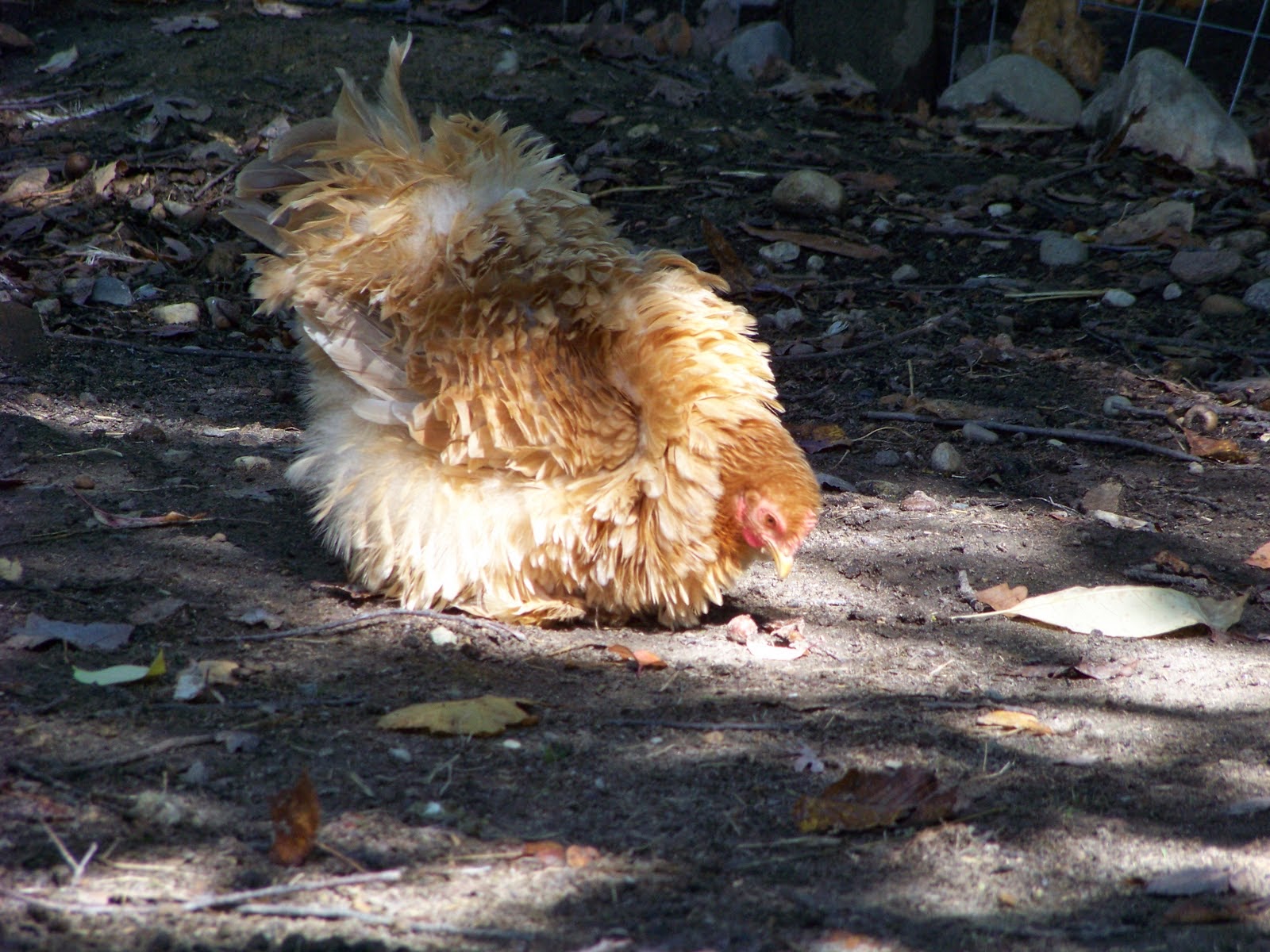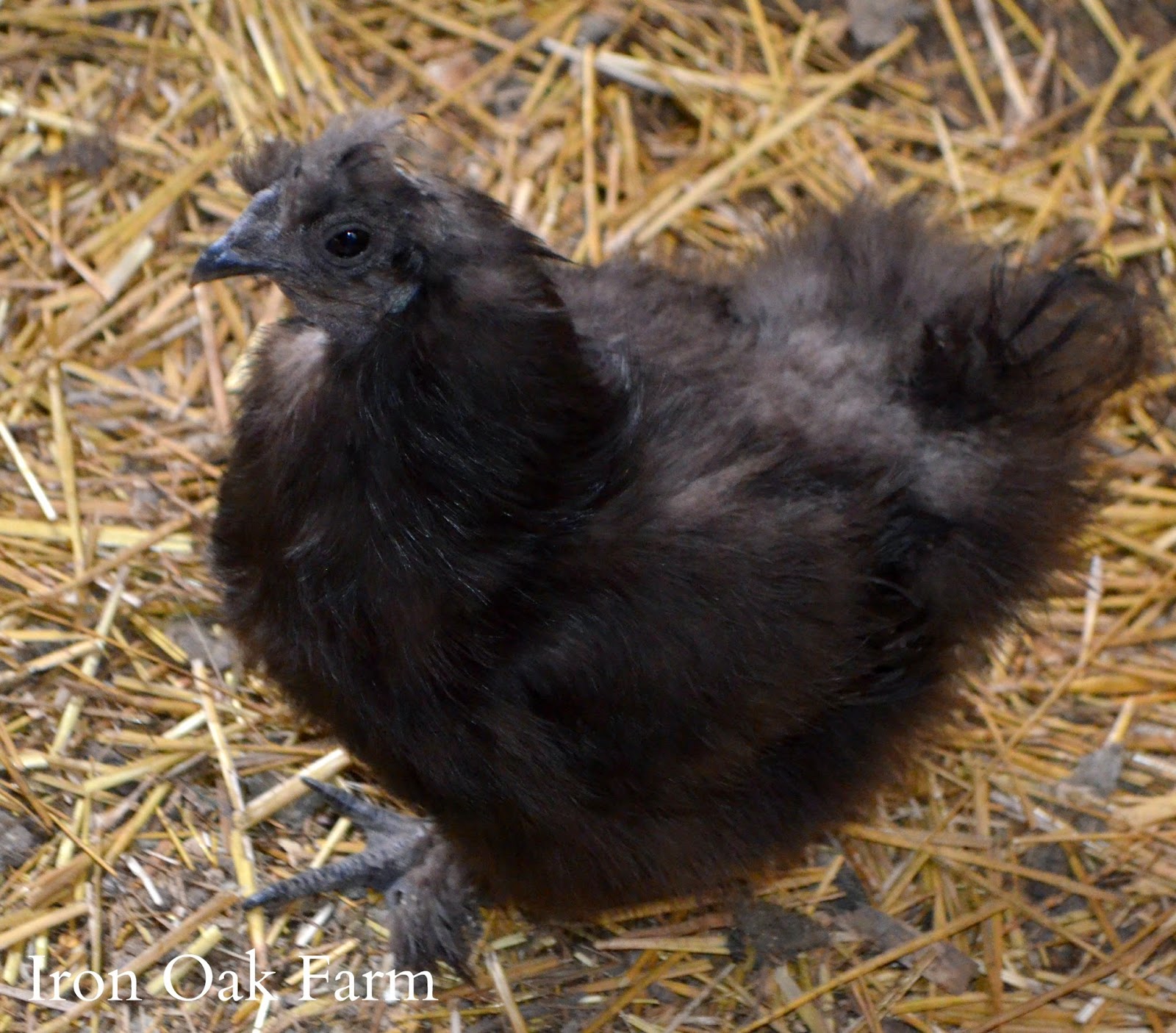To give an honest answer to my own post title, I wouldn’t.
I wouldn’t raise bantams. You see, I’m a big chicken kinda-girl. You show me an Orphington, Brahma or a big ole Cochin and I wan to wrap my arms around it’s fat fluffy self and bear hug all that lovely chicken plumpness. “I love big chickens and I cannot lie.” (Did I go too far?…I went to far.) But that’s ok.because big chickens are just a preference, and that’s all it is. I’m the same way with dogs. I love big dogs. Big pudding like lugs who like to slobber and lay their big heavy heads in your lap begging for a scratch behind the ear.
But preference aside, I love all chickens and if we weren’t blessed with a good sized piece of property and a comfortable run, then bantams would definitely be a consideration. In fact…that’s kinda how Zach and I started out.
I had chickens throughout my childhood but when I went to college I had to phase out my chicken addiction because my parents weren’t keen on keeping them for me. So sadly, I was chicken-less for about 5 years. Dark times…dark times. But then Zach and I got married and decided that we were going to start a small flock. We were living at my parents and didn’t want anything too big because we assumed we would be moving soon and wasn’t sure what the future might hold as far as backyard size. So we built a small triangle coop and filled it with four small bantams.
It was perfect! Even though I had dreams of one day raising Jersey Giants or Sussex, those four chickens tamed the wild beast within me and I got my chicken fix until we were able to buy our farm. I loved those chickens dearly. In fact, our Silkie is still my favorite hen.
So even though I wouldn’t choose to raise bantams now-a-days, that doesn’t mean that they’re not a perfect choice for someone else depending on your preference and situation. Their smaller size might be just what you’re looking for in a chicken. Here’s 9 reasons to love Bantams and a few considerations in choosing this breed.
1. They’re Adorable!
Ok, so maybe I prefer larger chickens but it’s kinda hard to deny that bantams are cute. Especially when they’re chicks!
2. And so are their Eggs!
You might not get a jumbo omelet from just one bantam egg, but a few might work. Many breeds of bantams lay on a daily basis and the eggs can be used in the same manner as a normal chicken egg. Depending on the breed, about 2 bantam eggs equal 1 medium chicken egg and they come in many shell colors. They’re adorable to display and make for interesting craft projects.
3. Less is More
Bantams and their pint sized stature require less food, smaller housing and they create less mess. So they’re cheaper to raise and require less effort as far as coop building and keeping things tidy. Like a full sized chicken, bantams help with insect control, their droppings can be used for fertilizer and though they may be smaller than a full sized chicken, their eggs are delicious and nutritious.
4. They’re Great For Kids
Children love bantams because they’re a perfect fit for small hands. Children can easily handle and care for a bantam because they weigh very little. The equipment is also easier to handle. Bantams do great with smaller, lighter weight feeding dishes and less water at one time so little ones don’t have to lug heavy water buckets around and can still have the experience and responsibility of taking care of a pet.
5. Perfect for Small Backyards
If you have a smaller backyard with limited space for a coop you can generally keep more bantams in the same space than you would full sized chickens. This allows for more variety among the breeds you keep.
6. There’s Lots of Variety
Bantams come in all shapes and sizes with interesting feather patterns and body types. Some breeds are referred to as a True Bantam. This is a breed that is naturally small. Sometimes these breeds can be less domesticated. Some examples would be the Sebright, Mile Fleur d’Uccle and the Serama.
A Miniature Breed (which will also be called bantam), is a smaller version of a normal sized breed. Some examples would be Bantam Rhode Island Red, Bantam Cochins and Bantam Polish breeds.
7. They’re Popular in the Show Circuit.
Many people enjoy raising bantams to compete in shows. It’s a fun hobby and a great way to learn about different breeds and meet other poultry enthusiasts.
8. Little Chickens with Big Personalities
Bantams are hilarious. Every bantam we’ve ever raised has had some sort of quirkiness. Our Silkie is a spazoid, our Polish was in another world, and our little Cochin was the friendliest chicken I’ve ever had. If you’re looking for entertainment then Bantams are your breed.
9. They Make Wonderful Mothers
Bantams, especially Silkies make wonderful mothers. They will attempt to sit on and hatch out anything they can or dye trying. For more on this read my post Mamma Silkie’s at it Again, where our Silkie hen attempts to steal on of our turkey eggs.
A Few things to Consider
Raising bantams, for the most part, is just like raising full sized chickens only on a smaller scale, but there area few differences that might need noting. Bantams can be mixed with full sized chickens. We mix ours and they do fine, but I have had experiences in the past where they do better separated. Sometimes the larger chickens just plow them over. Also, full sized roosters can try to mate with your bantam hens which can sometimes be dangerous.
Be sure to lower the food and water dish to the smallest chicken’s height or have two stations accommodating each size. Also bantams do better with crumble size food rather than pellets.
Bantams can also fly really well. If this is an issue perhaps consider a closed in run. They are also notorious escapees, squeezing through tiny holes in fences, or cracks in the gate.
Roosters
Ever hear the phrase “Mean as a bantam rooster?”…yeah me too. Ever wonder where those sayings come from? Well, as far a roosters are concerned this is maybe a gray area as far as the positive. I’ve had 5 Bantam roosters over the years and 4 out of 5 of those roosters were STINKERS!
To be fair, I posted a question to our readers to see what your experience has been and it was about 60-40. With 60 agreeing that bantams tend to have a size complex and make up for it with a LOT of attitude. The good thing about a bantam is that they’re so little that it’s hard for them to do much damage, though, I wouldn’t let a child around an aggressive rooster, bantam or not. So my advice is if you end up with a bantam rooster, spend a lot of time holding it, feed it by hand and hope for the best.
Crowing
Though their attitude might be big, a bantam rooster has a small crow. In my experience they do seem to crow more frequently but it’s usually quite a bit higher pitched and softer. It doesn’t seem to resonate as far. For example, I can hear all our roosters through the house even with the windows closed, but I can’t hear our bantam Sebright.
by Jennifer Sartell of Iron Oak Farm See more at: http://www.communitychickens.com/why-raise-bantams/?utm_source=Sailthru&utm_medium=email&utm_term=CC%20eNews&utm_campaign=01.27.15%20-%20CC%20eNews

..







